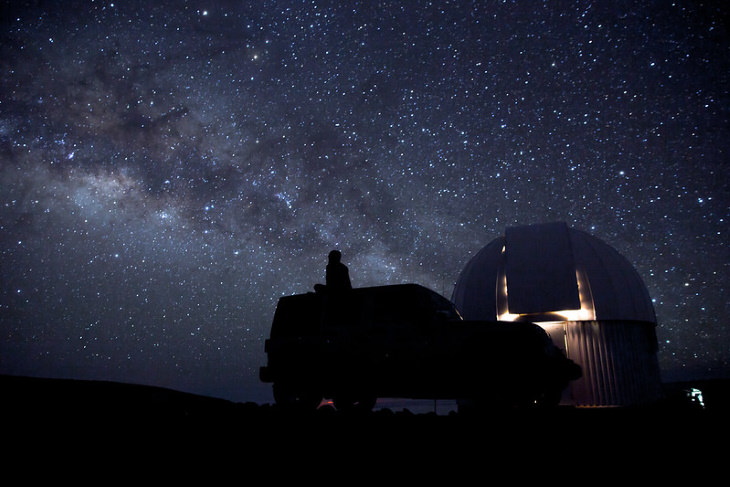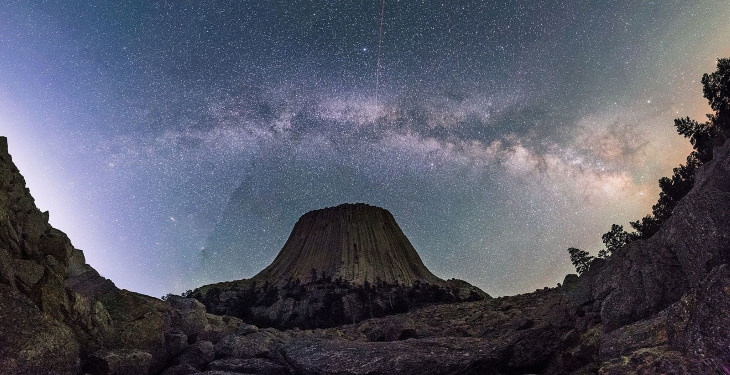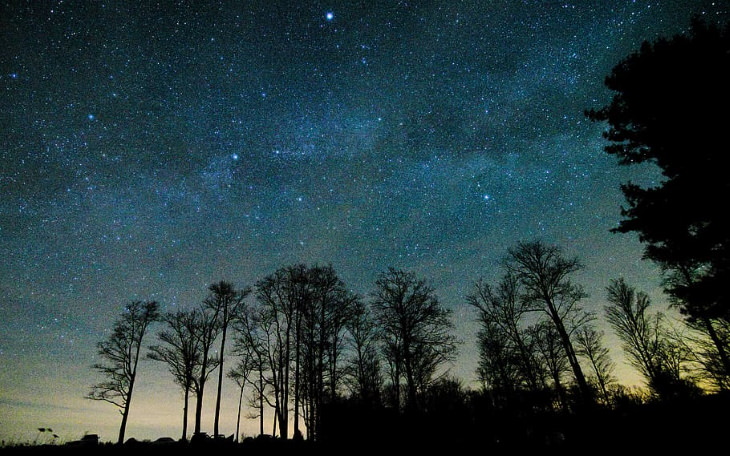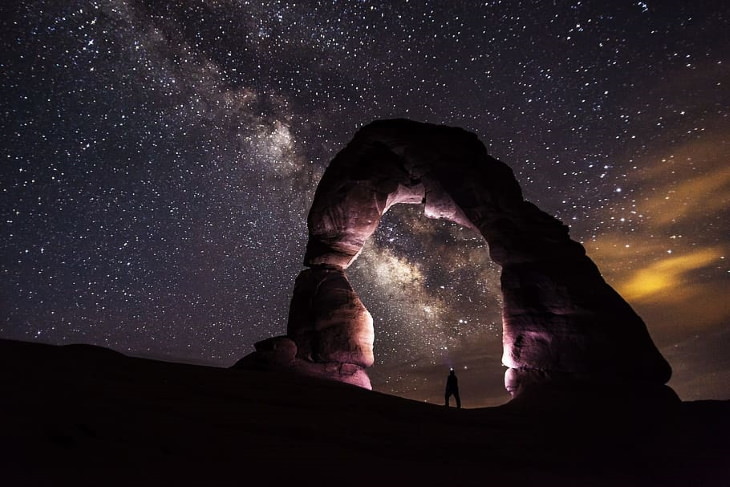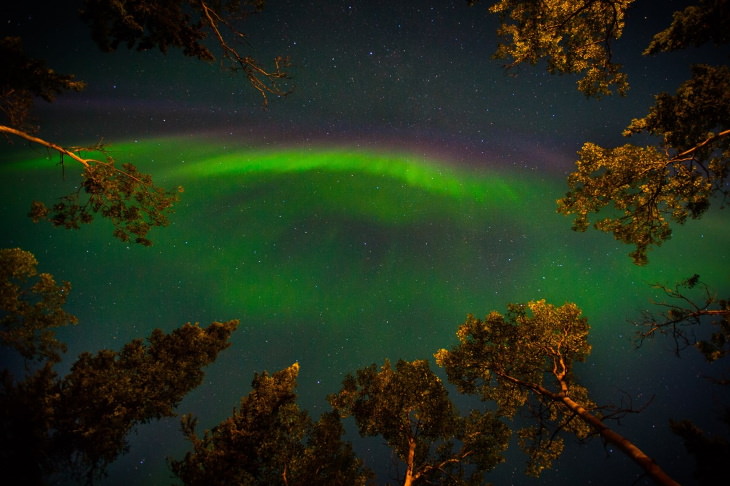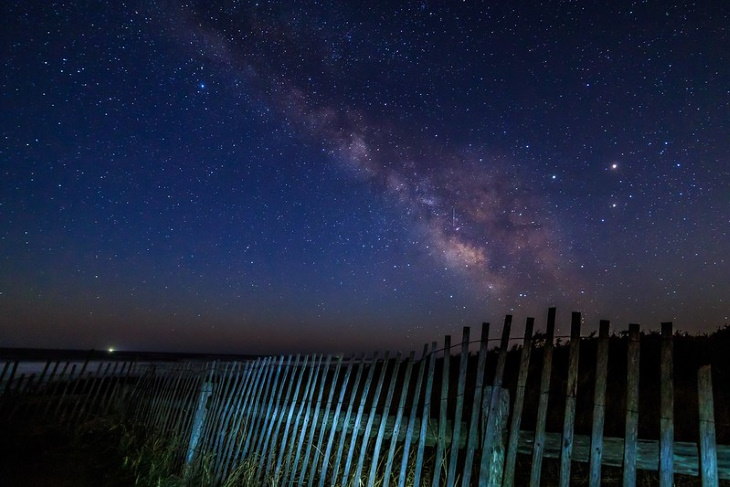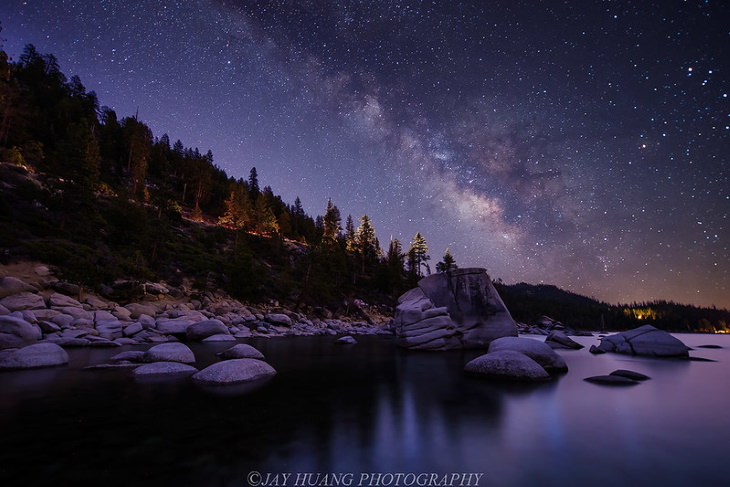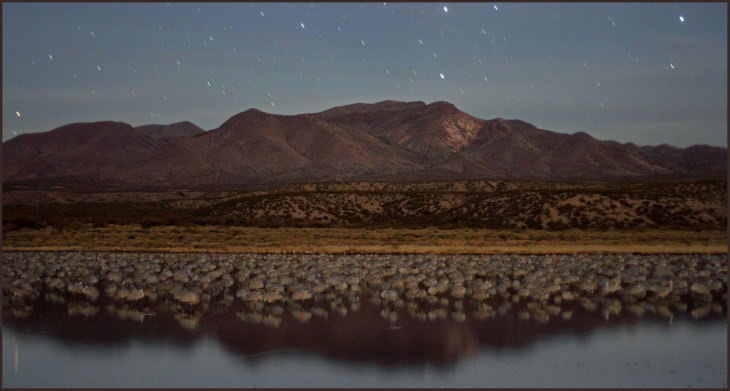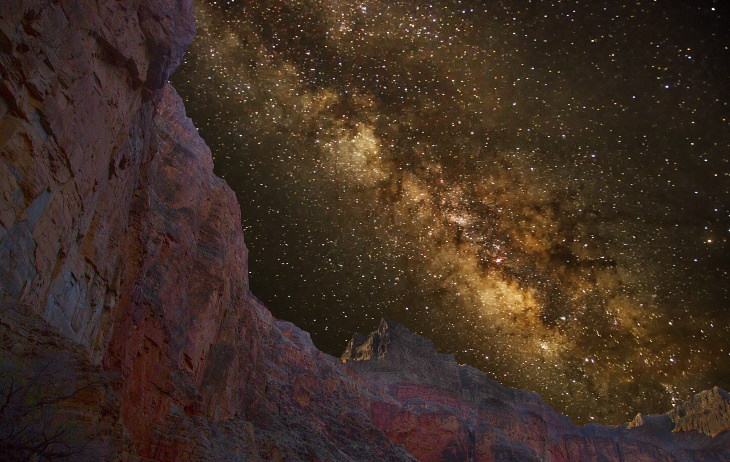1. Mauna Kea, Hawaii
Mauna Kea is a 4,207-meter (13,803 ft) tall volcano located on the Big Island of Hawaii. It is the highest point in the entire state and the location of the biggest and most advanced astronomical observatory in the world. According to astronomers, the dormant volcano offers the prime stargazing experience on the planet thanks to virtually no light pollution and crystal clear skies. After all, Hawaii is located in the middle of the Pacific ocean, and the island has the perfect climatic conditions for virtually cloud-free and dry skies all year round.
2. Devils Tower, Wyoming
Devils Tower is an igneous rock formation in northeastern Wyoming, and it's actually the first United States national monument, established in the distant 1906 by President Theodore Roosevelt. Apart from being a beautiful place to visit in itself, Devils Tower is also one of the best stargazing locations in the country, boasting of especially fascinating views of the Milky Way in the summer. Fun fact: you may recognize Devils Tower from Steven Spielberg's 1977 masterpiece 'Close Encounters of the Third Kind'.
3. Cherry Springs State Park, Pennsylvania
Thanks to its remoteness and landscape, Cherry Springs State Park is considered to be the best stargazing location on the East Coast of the US, it was even proclaimed an International Dark Sky Park in 2007 - one of the very few in the country. Despite its relative proximity to human settlements, the stargazing location is surrounded by the Susquehannock State Forest and set on a hill that allows a full view of the night sky. Visitors say the park offers a superior view at the Milky Way, so bright it seems like it casts a shadow, at times.
4. Arches National Park, Moab, Utah
Several locations in the west offer an unprecedented view of the night sky, with one of the best destinations to consider being the vast deserts of the American West. At Arches National Park, you can get a two in one experience: on one hand, you'll get to view the unique arch-shaped rock formations seen only in the park, and on the other hand, you will be able to enjoy some magnificent night views by camping in the desert. Shooting stars, in particular, are a common sight year-round.
5. Joshua Tree National Park, California
The Mojave desert in California is home to one of the most unique-looking and rare trees in the world - Joshua trees, also known as the yucca palm. With the aim to preserve the strange tree species, the Joshua Tree National Monument was created in 1936, and it was further redesigned to be a park in 1994. The clean rocky desert with virtually no air pollution offers an unobscured view at the night sky, and the park is open 24/7, which made it a favorite location for stargazers from around the world.
Best of all, when traveling to the park, you'll be able to explore several hiking trails scattered with the alien-looking yucca palms during the day and enjoy indescribably beautiful skies at night, especially in the most remote areas of the park.
6. Denali National Park, Alaska
Traveling all the way north, you'll find Denali National Park, a vast Arctic landscape spanning millions of acres and just one road. Denali National Park is said to be the best place in the US to witness the northern lights, also known as the aurora borealis. As you will likely know, auroras are bright-colored lights that appear in the skies on both poles of the planet as a result of bursts of energy from the Sun that interact with the Earth's atmosphere called coronal mass ejections. In Alaska, these fascinating light displays are best observed in fall or early spring, as winters are extremely cold and summers are too light, so plan your trip accordingly.
7. Cape Cod, Massachusetts
One of the very few places with a sky dark enough to admire the Milky Way in its full glory in Massachusetts is Cape Cod. Seasoned stargazers agree that you'll be able to catch some of the clearest views at the night sky along the Cape Cod National Seashore, the most remote area located on the Outer Cape. More specifically, locals recommend Marconi Beach, Chatham Light Beach, Truro Beach, and Wellfleet Beach for stargazing. Although you can enjoy the beautiful views of the night sky all year round, stargazers say it's best to visit Cape Cod outside of the summer tourist season to avoid crowds and unreasonable prices.
8. Lake Tahoe, California
Another popular stargazing spot in California is Lake Tahoe, the famous winter sports resort. Throughout the summer months, organized stargazing tours are available in different spots of the lake. Perfect for beginners and families, the night sky views of Lake Tahoe will give you a glimpse of Jupiter's moons, Mars, the rings of Saturn, and other rare sights in the Milky Way.
9. Bosque del Apache Wildlife Refuge, New Mexico
The Bosque Del Apache Wildlife Refuge is home to a colony of thousands of snow geese, and no lights are allowed there not to stir or frighten birds. There are hundreds of other bird species in the park, too, with the crowd favorite being the Sandhill crane, the migration of which is a real holiday event in the park. Coincidentally, the lack of light also makes the wildlife preserve a prime location for stargazing, accompanied by the unique view of thousands of birds. Fall is the best season to witness a huge variety of birds, and, of course, the fall meteor showers.
10. The Grand Canyon, Arizona
The Grand Canyon is even more beautiful at night when the bright night sky scattered with thousands of stars lights up the rugged cliffs and the Colorado river glimmers like a silver snake in the distance. But the geological brilliance of the canyon isn't the only attraction here at night, as since 2016, the lighting in the Grand Canyon Village was adjusted to be dark sky-friendly, and since 2019, it was proclaimed an International Dark Sky Park. Now visitors are able to catch some magnificent sky views (and photos!) from both the North and South rims of the canyon.
Share this article with other stargazers!

